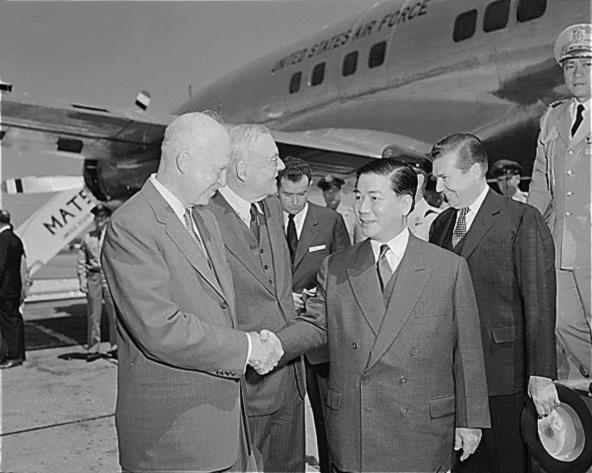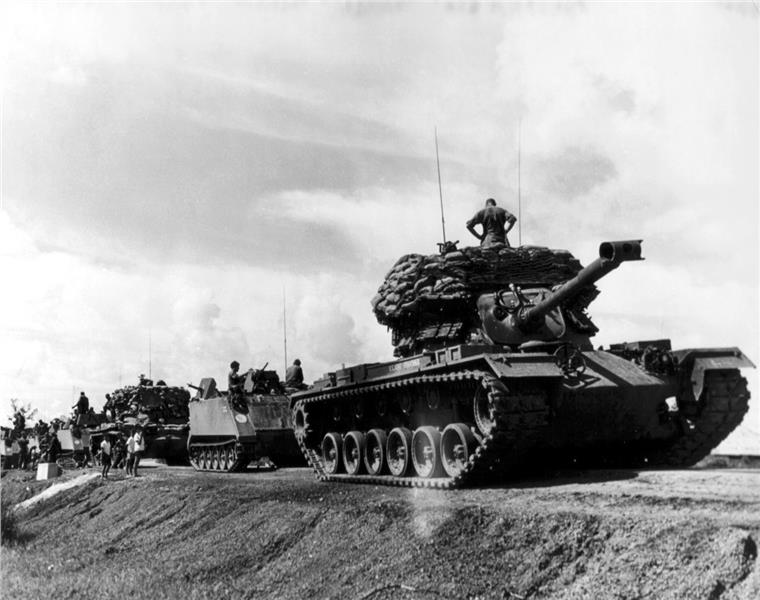After the Geneva Conference, Vietnam was divided into two separate part with the 17th parallel as the boundary. According to the conference, within 300 days, two sides’ civilians had a chance to move freely between the two provisional states. Besides, Vietnamese people were to be given a right to reside in the part they wanted. In 1956, elections were to be held across the country to reunify the government. About one million of northern Catholics moved to the south, as they feared the persecution of the communists. The relocation of Catholics following an American propaganda campaign themed “The Virgin Mary is heading south” was supported by the United States with a fund of US$93 including the Seven Fleet ferrying refugees. The major Catholics in the north had intention to give the later Ngo Dinh Diem regime a strong anti-communist constituency. This favored Ngo Dinh Diem continued to staff his administration’s key posts mostly with Catholics in northern and central Vietnam.
In addition to the movement of Catholics to the south, about 130 thousand of “Revolutionary Regroupees” went to the north for “Regroupment”. This figure was expected to return the south within two years. About 52 thousand of Vietnamese civilians in the south went to the north. The Viet Minh left approximately 5 to 10 thousand of nucleus of effort in the south to form a political and military substructure within the object of its irredentism. In April 1956, the last French soldiers left Vietnam. At the same time, the People’s Republic of China withdrew from the north of Vietnam. From 1953 to 1956, the Viet Minh conducted a land reform in which wealthy landowners were executed. According to official records, it is estimated that there were about 100 thousand of landowners in the execution, nearly 80 percent of whom was wrongly classified. In 1956, authorities in Hanoi restored a large amount of land to original landowners.

While, in the south, the State of Vietnam was led by Bao Dai with Ngo Dinh Diem as his Prime Minister, and the support of France and the U.S. It was a paradox that both the U.S and Ngo Dinh Diem regime did not sign anything in the Geneva Conference. The delegation of Vietnamese non-communists strongly disagreed with any division of Vietnam about the reunification. Yet, the anti-communist Vietnamese delegation lost out when the proposal on holding elections across the country under the supervision of “local commissions” of Pham Van Dong, a Viet Minh delegate, was accepted by the French. With the support of South Vietnam and the United Kingdom, the United States responded with its “American Plan”. The U.S were to accept a reunified and communist-led Vietnam if the elections would show a free and fair result. President Eisenhower, in 1954, for the fear that 80 percent of Vietnamese people would vote for Ho Chi Minh, he backed Ngo Dinh Diem regime in South Vietnam. From April to June 1955, through military operations against two religious groups as Cao Dai and Hoa Hao of Ba Cut, Ngo Dinh Diem regime defeated all political oppositions in the south. The campaign also targeted the Binh Xuyen organized crime group. At the time, the Binh Xuyen was accredited by the national police, and Prime Minister Ngo Dinh Diem who issued a final offer for them to surrender and come under state control. The battle started on April 27, 1955 and the Vietnam National Army had largely crushed the Bình Xuyên within a week. In the end, the Binh Xuyen were definitely defeated, their army disbanded and their vice operations collapsed.

The election in1955 in South Vietnam is seen as a referendum to determine the future leadership of the National Vietnam. Supported by the U.S, the poll took place with the result of Ngo Dinh Diem receiving more than 98.2% of the vote. The poll was assumed to have the contributions of electoral fraud, resulting in an official overthrowing of Bao Dai Emperor. The Republic of Vietnam was established with Ngo Dinh Diem as president. While elections in the north showed that Ho Chi Minh and communist officials won at least 99 percent of the vote.
According to the domino theory, if one country fell to communism, other countries would follow. Thus, President Eisenhower proposed a policy on anti-communism. John F. Kennedy, then a U.S Senator spoke to the American Friends of Vietnam that Burma, Thailand, India, Japan, The Philippines, Laos, and Cambodia of whose security would be threatened if the Red Tide of Communism would overflow into Vietnam. These above actions of the United States proved that the power was increasingly intervening in Indochina War and triggered Vietnam War to happen.
